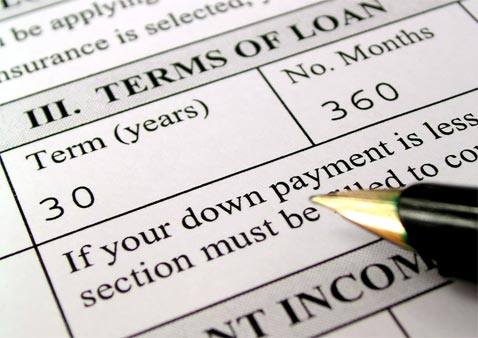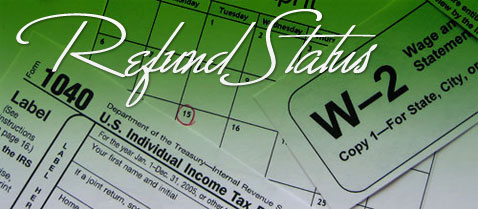The perfect combination of rising home values and low interest rates is here. Conditions are ripe for refinancing a mortgage.
Rates now average close to 3.5 percent nationwide. A household can cut its mortgage payment $60 per month, per $100,000 in loan balance, with just a one percent reduction in interest rate.
Thirty-year mortgage rates have fallen by more than 50 basis points (0.50%) since the start of the year. Fifteen-year mortgage rates are down just as much.

The New York Times reports that 38 million Americans now have at least 20 percent equity in their homes, up from 31 million just a few years ago.
More equity gives borrowers more leverage to negotiate better rates, terms and fees with lenders. At 20 percent equity, you’re also eligible to eliminate your mortgage insurance.
The number of refinance requests has exploded in recent weeks, but if you’re undecided about refinancing, here are five reasons why acting now might make sound financial sense.
1. Slash Your Monthly Payments. It doesn’t take a math-centric mind to calculate that lower interest rates equal higher savings. As long as closing costs are kept down, even a quarter-percentage point reduction can be worthwhile.
If you’re paying substantially higher interest rates than today’s average, you stand to save tens of thousands of dollars by refinancing today.
2. Save by Shortening the Term of Your Loan. Although rates for 30-year fixed mortgages now average close to 3.5 percent, rates for 15-year mortgages are even lower – less than three percent in some cases.
Switching from a 30-year to a 15-year fixed term could save you as much as 65 percent in interest payments over the life of the loan.
Historically, homeowners who trade 30-year for 15-year mortgages obtain lower interest rates in exchange for higher monthly payments. Given today’s low rates, though, you may find that the monthly payments on a 15-year mortgage aren’t much higher than those on a 30-year loan.
A shorter term helps you pay off the mortgage faster. Depending on your loan amount, you could save more than $100,000 in total interest by reducing the APR by one or two percentage points.
Switching to a shorter term makes the most sense for borrowers with secure jobs or enough savings to ensure that they can meet the payments if they suffer a temporary loss of income.
3. Switch from an Adjustable Rate to a Fixed Rate. If you have an Adjustable Rate Mortgage (ARM), now is a good time to lock in a lower rate rather than risking higher rates in the future.
This is especially true if you opened an ARM loan a few years ago. The low introductory rates offered by ARMs back then are often higher than today’s fixed rates.
If your low introductory rate has expired, that’s even more reason to refinance to a fixed rate.
Most mortgage lenders and brokers recommend fixed rates. Why? An ARM’s introductory rate is typically not significantly lower than those of fixed-rate mortgages. In today’s interest rate environment, ARM savings usually do not justify the risk of skyrocketing rates in the future.
 4. Get Rid of Your Mortgage Insurance. If you have at least 20 percent equity in your home, you can get rid of the extra monthly expense of mortgage insurance.
4. Get Rid of Your Mortgage Insurance. If you have at least 20 percent equity in your home, you can get rid of the extra monthly expense of mortgage insurance.
Mortgage insurance comes in two forms: private mortgage insurance (PMI) for conventional loans, or the FHA mortgage insurance premium, or “MIP”.
If you’re not sure how much equity you have, consult a real estate agent or a mortgage professional for an estimate of the home’s current value. If – like many properties across the country – the value has risen in recent years, your equity has also increased.
Then, request a professional appraisal. That is the official document that proves your home’s new value. With it, you can qualify for a new mortgage with a lower rate and no mortgage insurance payments.
5. Eliminate Closing Costs for the New Mortgage. One reason given by some homeowners for not refinancing is that the closing costs of a new mortgage could negate the other financial benefits.
If you opt for a zero-closing cost mortgage, however, you save money monthly and pay nothing for the privilege.
Zero-closing cost mortgages are exactly what the name states – loans with no closing costs.
Most lenders require a slightly higher interest rate in exchange for eliminating the closing costs. But for loans of $250,000 or more, the rate increase is so slight – usually 25 basis points (0.25%) – that borrowers still reap substantial benefits.
And for loans exceeding $400,000, the rate typically inches up by only 12.5 basis points (0.125%).
With rates so low, many homeowners are refinancing with no costs, and still dropping their current rate significantly.
No-closing cost mortgages are available across all loan types, including FHA loans, VA loans and conforming mortgages (those conforming to Fannie Mae and Freddie Mac guidelines). Zero-closing cost mortgages are available in all 50 states.
Next Steps for Homeowners
Today’s households are the fortunate recipients of near-record- low mortgage rates. Few periods in history have seen such affordable refinance terms.
Get a rate quote from your lender of choice before rate levels rise. Mortgage rates move daily, and throughout the day. When you find the chance to lower your housing costs forever, “now” is better than “later.” Next week or next month, the opportunity could disappear.
This article was written by Peter Gerardo of themortgagereports.com

